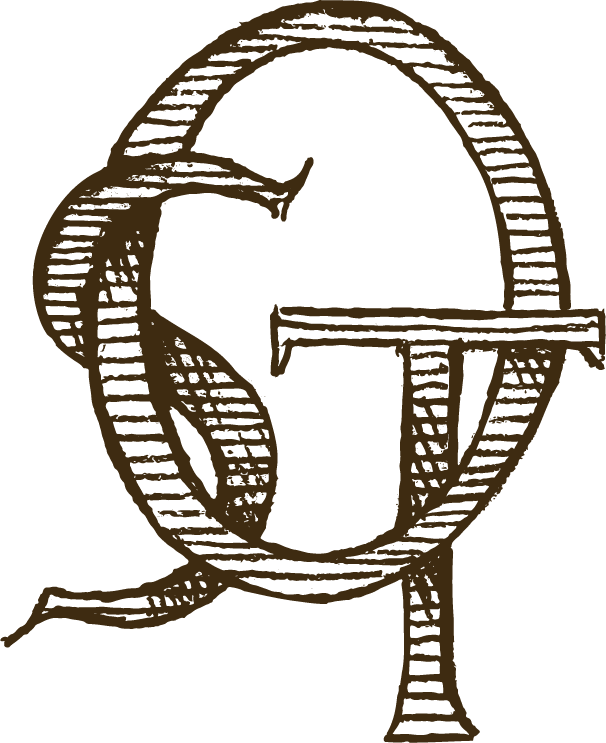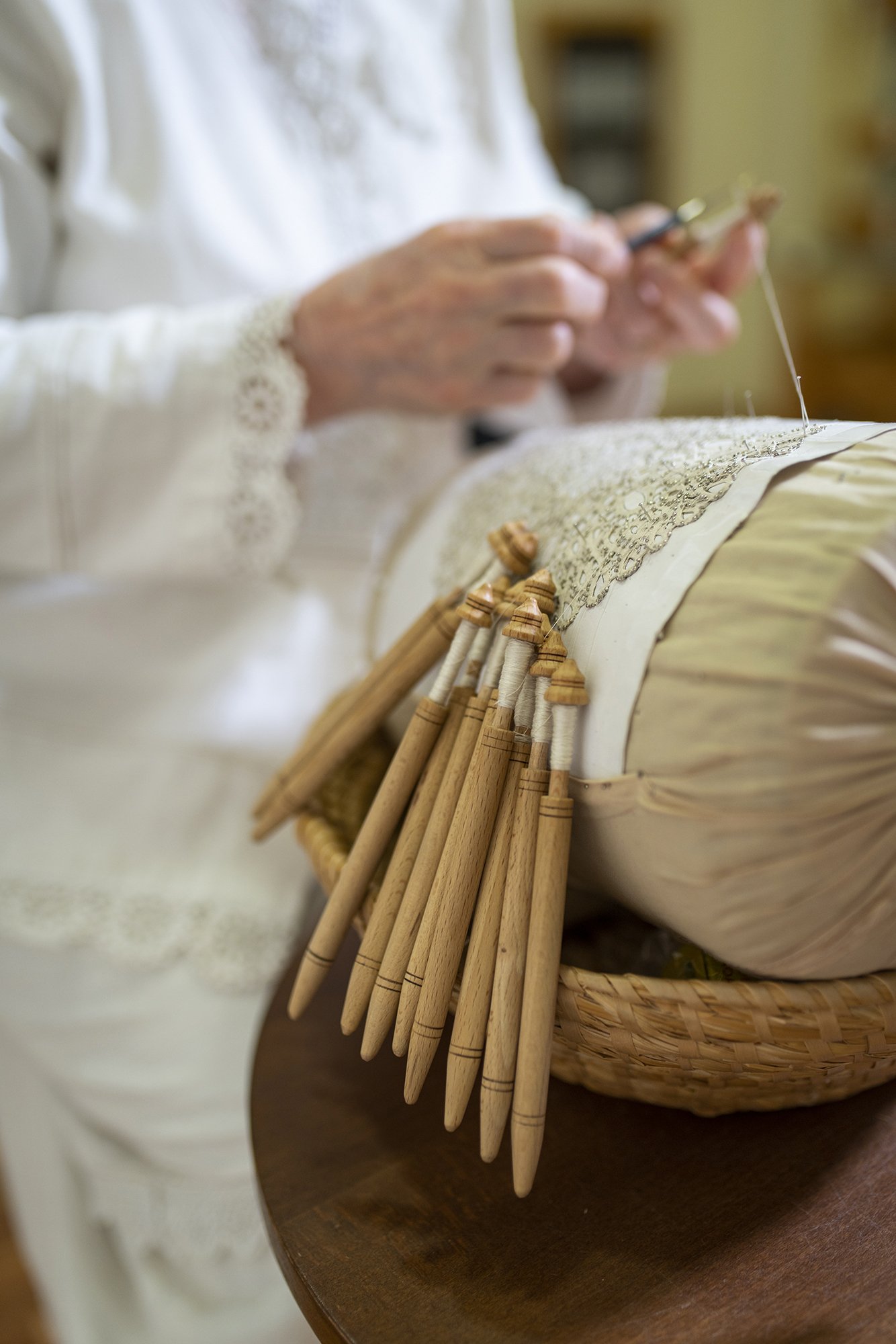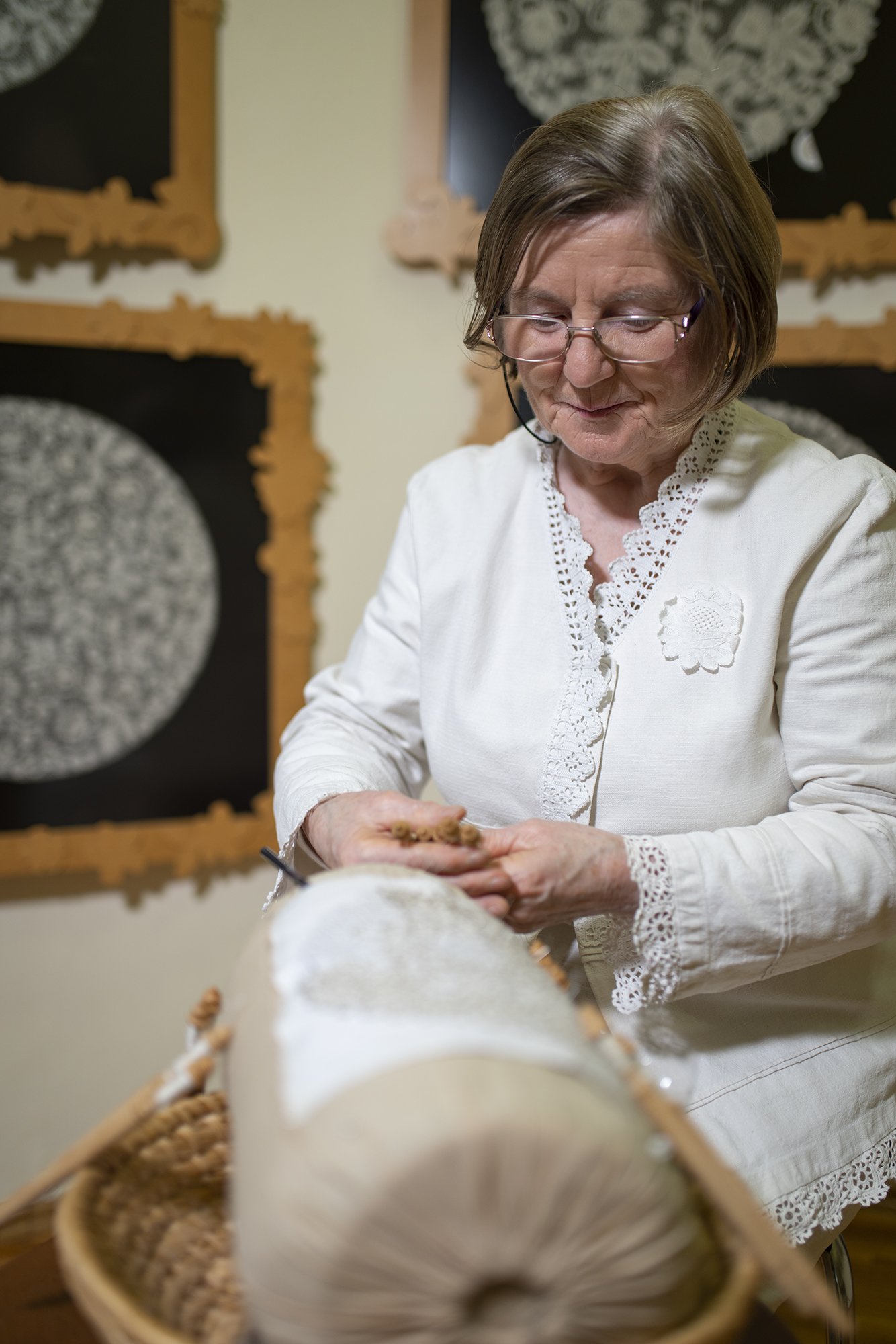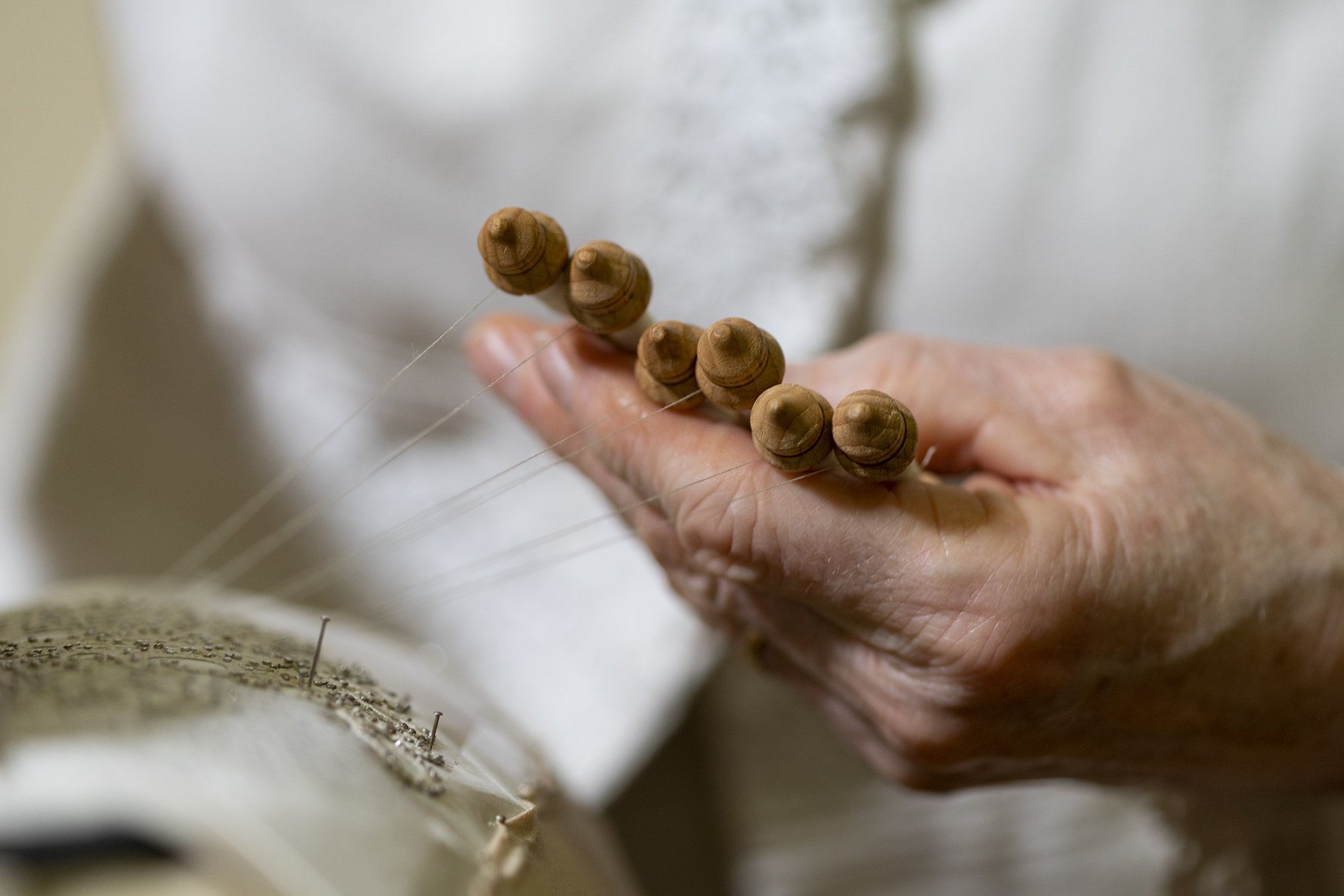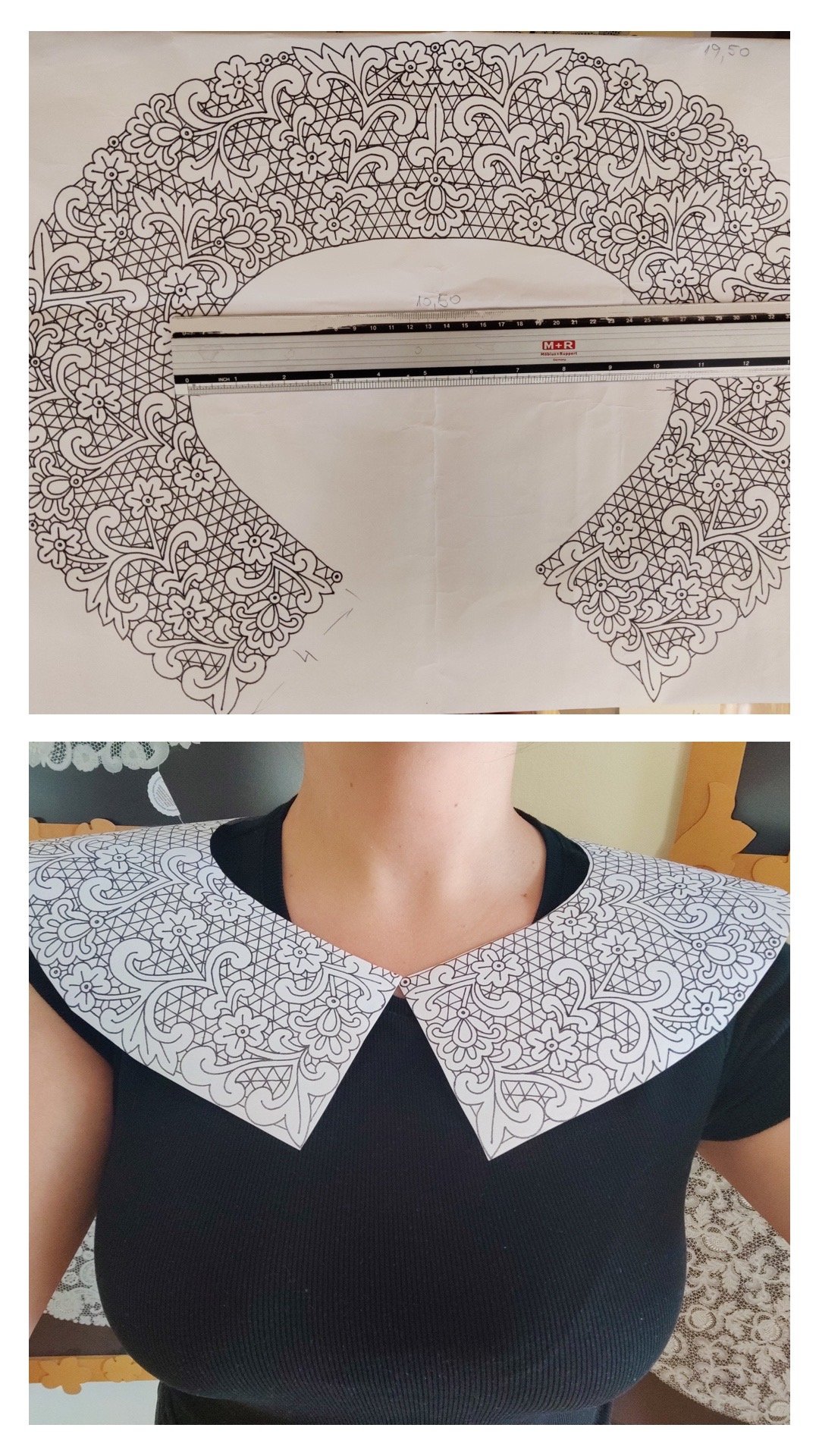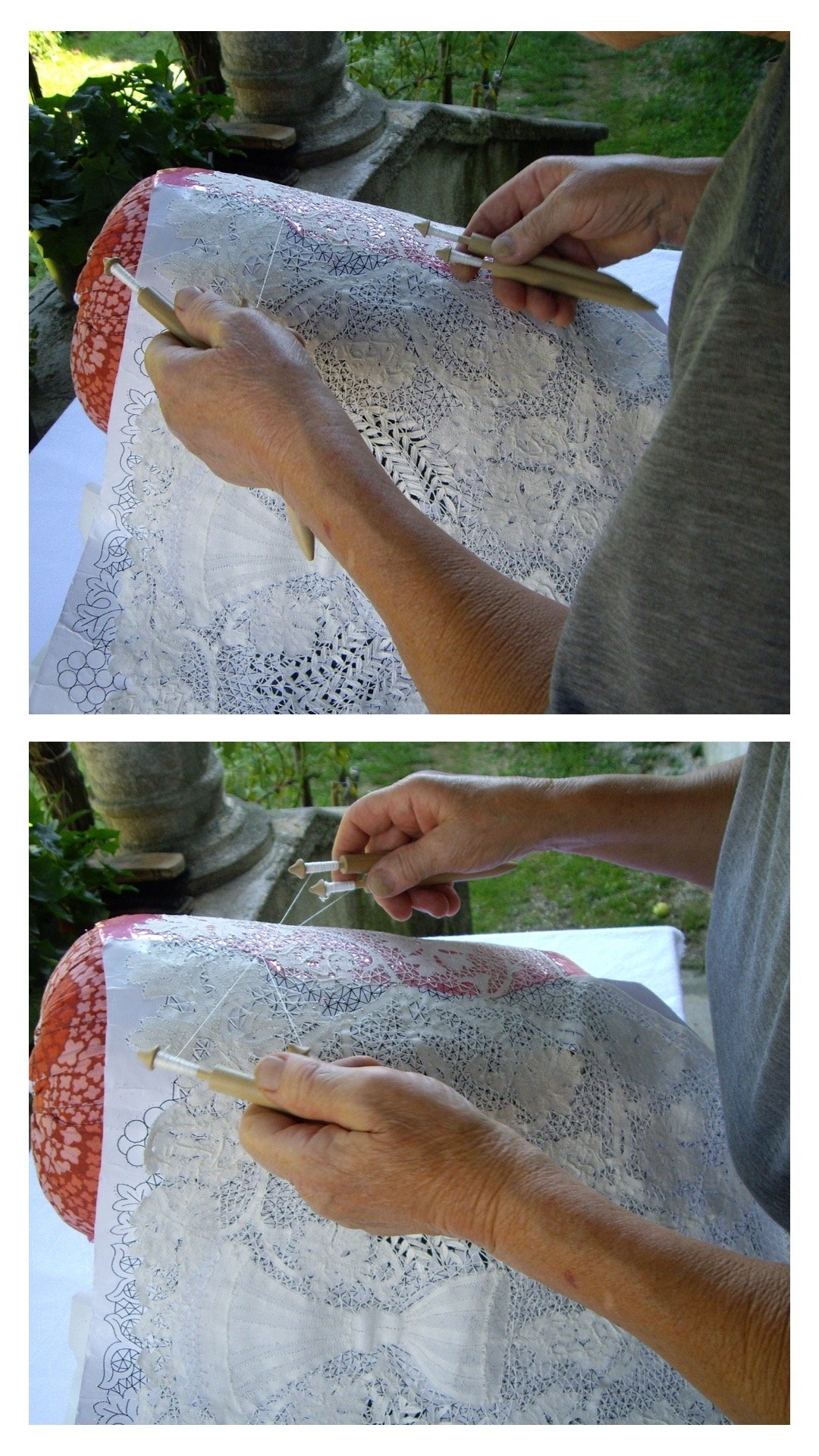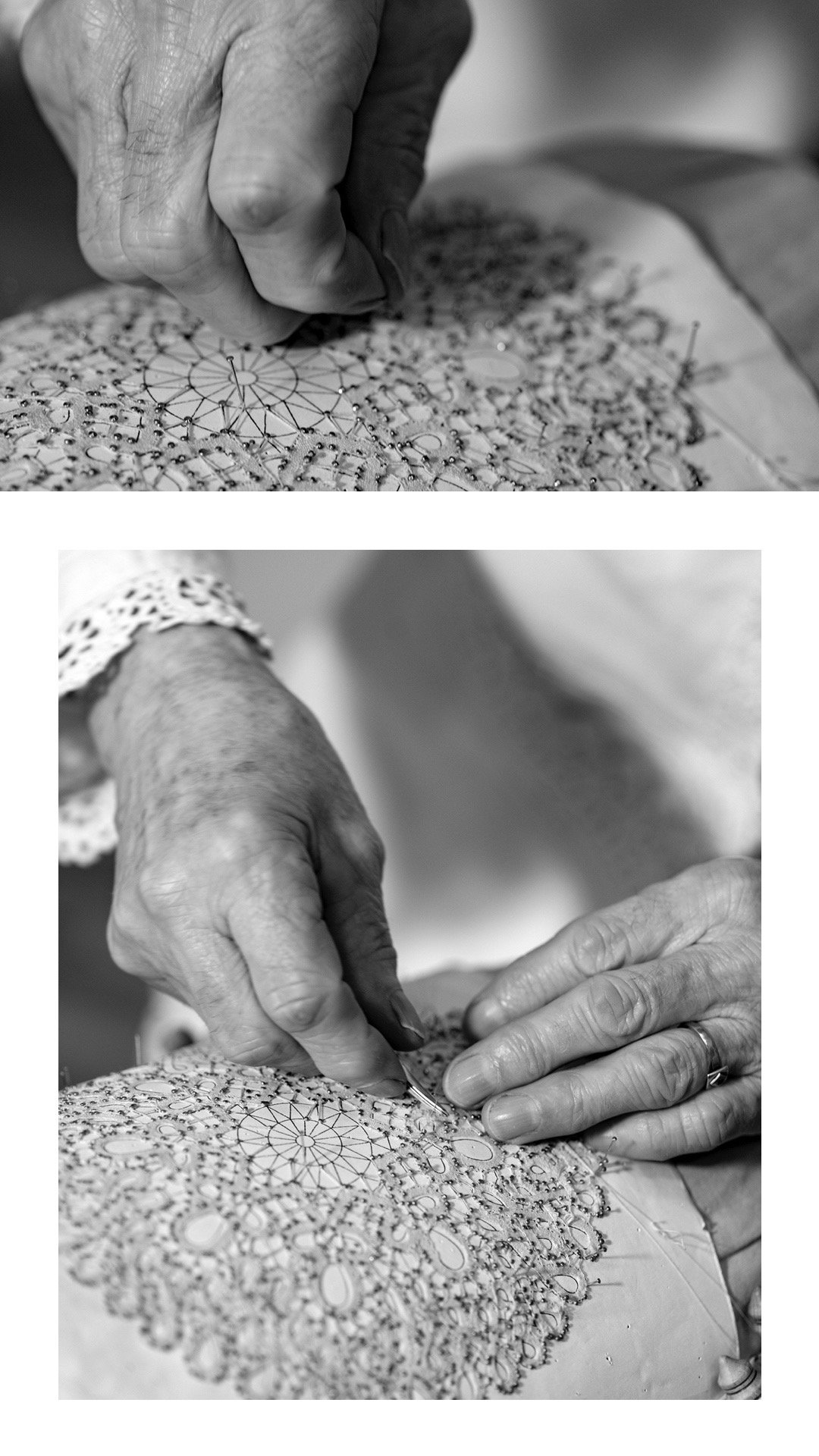LEPOGLAVA LACE COOPERATIVE
Traditional Croatian Lace
In Croatia, a world center for handwoven lace work, the tradition has persevered despite global trends. In an effort to guarantee its longevity, UNESCO recognized Croatian lacemaking as an Intangible Cultural Heritage of Humanity. Now, within the country, select weavers guard the craft as a point of national pride. In the town of Lepoglava, set in the hill of northern Croatia, the style of lacemaking is particularly fine and distinctive. Here, handwoven lace is made with wooden bobbins that twist and turn thin threads of fine cotton and linen into geometric patterns around floral and animal motifs. Lepoglava lacemakers rely on a series of classic patterns that, in 1937, rose to global prominence at the Paris World Fair when Lepoglava lace won the gold medal. Two years later, it won bronze in Berlin.
Whimsical, feminine and intricate, the style utilizes negative space and fine stitching to create mesmerizing, folksy patterns that connect us to the region’s golden era. Protecting that heritage is what led a group of female lacemakers to form the Lepoglava Lace Cooperative, just shy of twenty years ago. The cooperative’s mission is straightforward: to guard their art while teaching the next generation of lacemakers to do the same.
“I became a lacemaker to protect traditions,” Karmen ŠoŠtarić explained. “My Grandmother was a lacemaker.” Today she organizes the cooperative.
